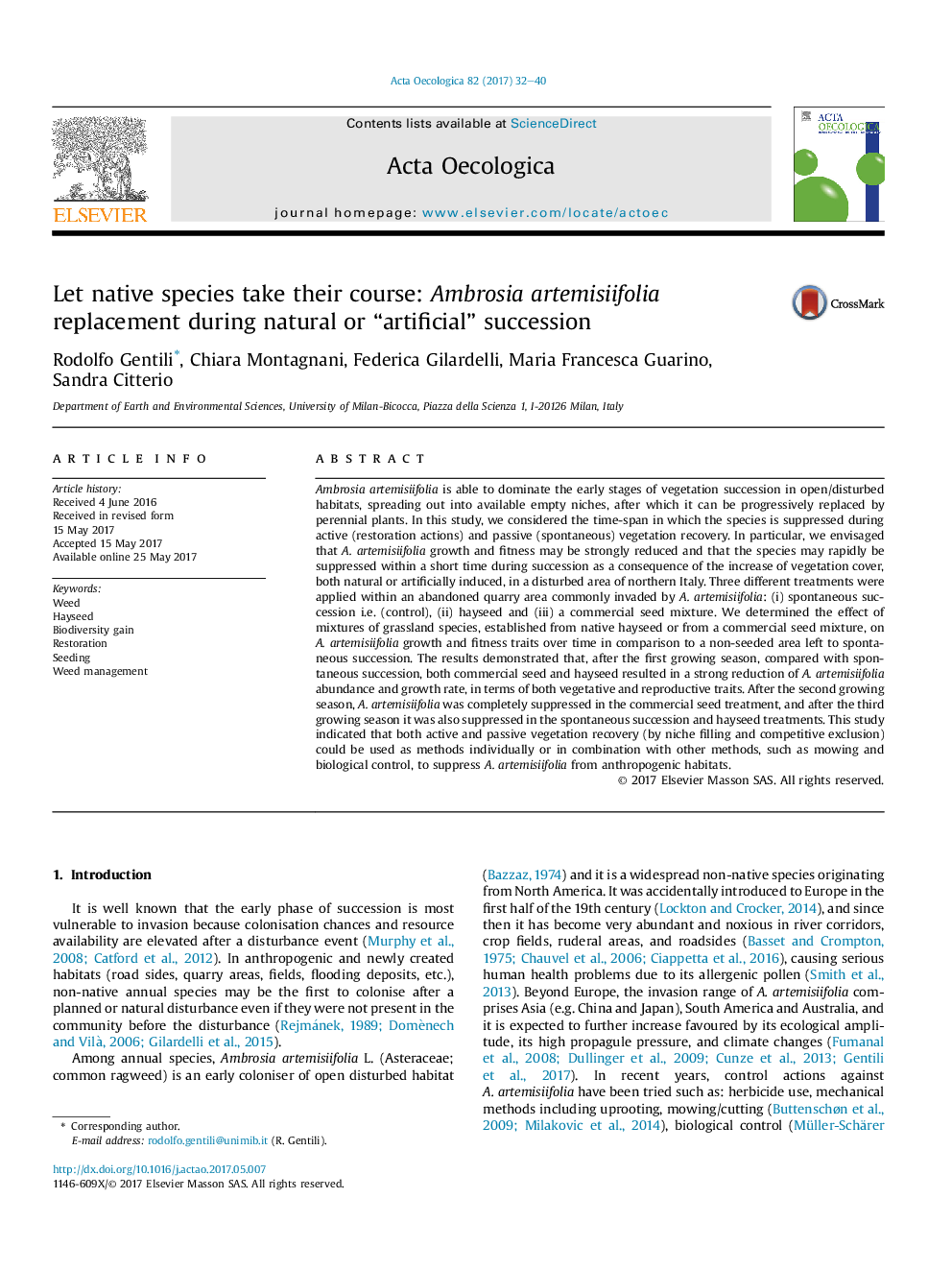| Article ID | Journal | Published Year | Pages | File Type |
|---|---|---|---|---|
| 5742504 | Acta Oecologica | 2017 | 9 Pages |
â¢A. artemisiifolia can be suppressed in less than 3 year by the spontaneous succession.â¢Interspecific competition from spontaneous or human-induced succession affected the species' traits.â¢Seeding hayseed assure higher species diversity than commercial seeds in vegetation recovery to contrast A. artemisiifolia.â¢Active or passive vegetation recovery (i.e. succession) could be used for management purposes to suppress A. artemisiifolia.
Ambrosia artemisiifolia is able to dominate the early stages of vegetation succession in open/disturbed habitats, spreading out into available empty niches, after which it can be progressively replaced by perennial plants. In this study, we considered the time-span in which the species is suppressed during active (restoration actions) and passive (spontaneous) vegetation recovery. In particular, we envisaged that A. artemisiifolia growth and fitness may be strongly reduced and that the species may rapidly be suppressed within a short time during succession as a consequence of the increase of vegetation cover, both natural or artificially induced, in a disturbed area of northern Italy. Three different treatments were applied within an abandoned quarry area commonly invaded by A. artemisiifolia: (i) spontaneous succession i.e. (control), (ii) hayseed and (iii) a commercial seed mixture. We determined the effect of mixtures of grassland species, established from native hayseed or from a commercial seed mixture, on A. artemisiifolia growth and fitness traits over time in comparison to a non-seeded area left to spontaneous succession. The results demonstrated that, after the first growing season, compared with spontaneous succession, both commercial seed and hayseed resulted in a strong reduction of A. artemisiifolia abundance and growth rate, in terms of both vegetative and reproductive traits. After the second growing season, A. artemisiifolia was completely suppressed in the commercial seed treatment, and after the third growing season it was also suppressed in the spontaneous succession and hayseed treatments. This study indicated that both active and passive vegetation recovery (by niche filling and competitive exclusion) could be used as methods individually or in combination with other methods, such as mowing and biological control, to suppress A. artemisiifolia from anthropogenic habitats.
